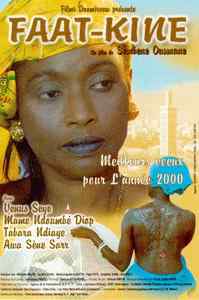Fiche Personne
Musique
Théâtre
Cinéma/TV
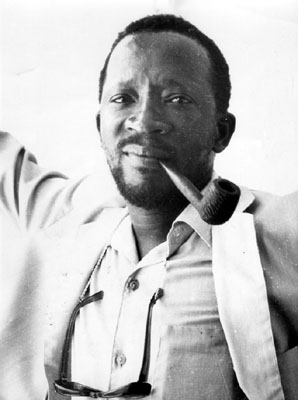 © Abdou Fary Faye
© Abdou Fary Faye
Ousmane Sembène
Réalisateur/trice, Ecrivain/ne, Acteur/trice, Producteur/trice, Scénariste, Personne concernée
Sénégal
 © Abdou Fary Faye
© Abdou Fary Faye
Français
Romancier, Acteur, Réalisateur, Scénariste et Producteur sénégalais.
Parfois crédité
SEMBÈNE Ousmane
Sembène OUSMANE
Ousmane SEMBÈNE est né le 1er janvier 1923 à Ziguinchor, au sud du Sénégal. Décédé le 09 juin 2007 à Dakar (Sénégal).
Formé à la réalisation de films au Studio Gorki (Moscou). Romancier. Acteur. Producteur (Filmi Doomireew).
L’Ancien des Anciens !
Sembène Ousmane, écrivain cinéaste, est né à Ziguinchor au sud du Sénégal. Tour à tour pêcheur, maçon, mécanicien automobile, tirailleur sénégalais, docker puis responsable syndicale CGT à Marseille, il s’intéresse à la littérature africaine. Une passion qui le conduira à écrire des romans à partir de 1956. En 1959, il revient au Sénégal et fait le tour du continent africain. Agé de 40 ans, c’est à Moscou qu’il étudie le cinéma à Moscou avec Marc Donskoï et Sergueï Gherassimov. Dès 1962, il réalise des courts métrages. En 1966, son premier long métrage « La noire de »?le fait entrer dans la catégorie des réalisateurs politiquement et socialement engagés. Georges Sadoul écrit : « Grâce à Sembene Ousmane, le continent noir a pris enfin place dans l’histoire du cinéma mondial ».
FILMOGRAPHY / FILMOGRAPHIE
1963- L’Empire songhay
1962- Borom Sarret
1964- Niaye
1966- La noire de…
1968- Mandabi
1969- Traumatisme de la femme face à la polygamie
1969- Les dérives du chômage
1970- Taaw
1971- Emitaï
1972- L’Afrique aux olympiades, Basket africain aux J.O de Munich RFA
1975- Xala
1977- Ceddo
1987- Camp de Thiaroye
1992- Guelwaar
2000- Faat-Kiné, l’héroïsme au quotidien
2004- Mooladé
Bibliographie
Romans
– Le Docker Noir. Paris : Debresse (1956). rééd: Présence africaine (Paris), 1973, 2002, 2008 / Heinemann (Londres), 1987.
– Ô pays, mon beau peuple (1957). rééd. Paris: Presses pocket, 1975.
– Les Bouts de bois de Dieu (1960). Paris: Presses pocket, 1971.
– Voltaïque (1962), rééd Paris: Présence africaine, 1971, avec La Noire de….
– L’Harmattan. Paris: Présence africaine, 1964.
– Le Mandat, Paris: Présence africaine, 1965.
– Vehi-Ciosane, ou Blanche-Genèse ; suivi de Le Mandat (1966), Présence africaine, réed. 2000.
– Xala (1973). Paris: Présence africaine, 1973, rééd. 1995.
– Le Dernier de l’Empire. 2 tomes (1981). Paris: L’Harmattan, 1981.
– Niiwam, suivi de Taaw (1987). Paris: Présence africaine, 1987.
Sur Sembène
– Dia, Thierno & Barlet, Olivier. Sembène Ousmane (1923-2007) ». (Africultures n°76). Paris : L’Harmattan, 2009.
– Murphy, David. Imagining Alternatives in Film and Fiction – Sembene. Oxford: Africa World Press Inc., 2001.
– Niang, Sada. Littérature et cinéma en afrique francophone : Ousmane Sembène et Assia Djebar. Paris : L’Harmattan, 1996.
– Gadjigo, Samba. Ousmane Sembène: Dialogues with Critics and Writers. Amherst: University of Massachussetts Press, 1993.
– Vieyra, Paulin Soumanou. Ousmane Sembène cinéaste: première période, 1962 – 1971. Paris : Présence Africaine, 1972
Fontes / Our Source / Quelle / Nos Sources (MAIS INFORMAÇÕES / READ MORE / PLUS D’INFOS) :
– Africiné Magazine
Updated by Thierno DIA, 15 Feb 2024
Parfois crédité
SEMBÈNE Ousmane
Sembène OUSMANE
Ousmane SEMBÈNE est né le 1er janvier 1923 à Ziguinchor, au sud du Sénégal. Décédé le 09 juin 2007 à Dakar (Sénégal).
Formé à la réalisation de films au Studio Gorki (Moscou). Romancier. Acteur. Producteur (Filmi Doomireew).
L’Ancien des Anciens !
Sembène Ousmane, écrivain cinéaste, est né à Ziguinchor au sud du Sénégal. Tour à tour pêcheur, maçon, mécanicien automobile, tirailleur sénégalais, docker puis responsable syndicale CGT à Marseille, il s’intéresse à la littérature africaine. Une passion qui le conduira à écrire des romans à partir de 1956. En 1959, il revient au Sénégal et fait le tour du continent africain. Agé de 40 ans, c’est à Moscou qu’il étudie le cinéma à Moscou avec Marc Donskoï et Sergueï Gherassimov. Dès 1962, il réalise des courts métrages. En 1966, son premier long métrage « La noire de »?le fait entrer dans la catégorie des réalisateurs politiquement et socialement engagés. Georges Sadoul écrit : « Grâce à Sembene Ousmane, le continent noir a pris enfin place dans l’histoire du cinéma mondial ».
FILMOGRAPHY / FILMOGRAPHIE
1963- L’Empire songhay
1962- Borom Sarret
1964- Niaye
1966- La noire de…
1968- Mandabi
1969- Traumatisme de la femme face à la polygamie
1969- Les dérives du chômage
1970- Taaw
1971- Emitaï
1972- L’Afrique aux olympiades, Basket africain aux J.O de Munich RFA
1975- Xala
1977- Ceddo
1987- Camp de Thiaroye
1992- Guelwaar
2000- Faat-Kiné, l’héroïsme au quotidien
2004- Mooladé
Bibliographie
Romans
– Le Docker Noir. Paris : Debresse (1956). rééd: Présence africaine (Paris), 1973, 2002, 2008 / Heinemann (Londres), 1987.
– Ô pays, mon beau peuple (1957). rééd. Paris: Presses pocket, 1975.
– Les Bouts de bois de Dieu (1960). Paris: Presses pocket, 1971.
– Voltaïque (1962), rééd Paris: Présence africaine, 1971, avec La Noire de….
– L’Harmattan. Paris: Présence africaine, 1964.
– Le Mandat, Paris: Présence africaine, 1965.
– Vehi-Ciosane, ou Blanche-Genèse ; suivi de Le Mandat (1966), Présence africaine, réed. 2000.
– Xala (1973). Paris: Présence africaine, 1973, rééd. 1995.
– Le Dernier de l’Empire. 2 tomes (1981). Paris: L’Harmattan, 1981.
– Niiwam, suivi de Taaw (1987). Paris: Présence africaine, 1987.
Sur Sembène
– Dia, Thierno & Barlet, Olivier. Sembène Ousmane (1923-2007) ». (Africultures n°76). Paris : L’Harmattan, 2009.
– Murphy, David. Imagining Alternatives in Film and Fiction – Sembene. Oxford: Africa World Press Inc., 2001.
– Niang, Sada. Littérature et cinéma en afrique francophone : Ousmane Sembène et Assia Djebar. Paris : L’Harmattan, 1996.
– Gadjigo, Samba. Ousmane Sembène: Dialogues with Critics and Writers. Amherst: University of Massachussetts Press, 1993.
– Vieyra, Paulin Soumanou. Ousmane Sembène cinéaste: première période, 1962 – 1971. Paris : Présence Africaine, 1972
Fontes / Our Source / Quelle / Nos Sources (MAIS INFORMAÇÕES / READ MORE / PLUS D’INFOS) :
– Africiné Magazine
Updated by Thierno DIA, 15 Feb 2024
English
Senegalese Writer, Actor, Film Director, Screenwriter and Producer.
He is sometimes credited as
SEMBÈNE Ousmane
Sembène OUSMANE
Ziguinchor (Senegal), 1923 – 2007, Dakar (Senegal)
Born in 1923 in Casamance, southern Senegal, where his fisherman father had migrated from Dakar, Ousmane Sembene, or just Sembene, as many critics call him, has been hailed as one of the most prolific African writers and « the father of African film. ». Expelled from school in 1936 for undiscipline, his formal education will never go beyond middle school. Also unable to take on his father’s trade because he was always seasick, in 1938 he was sent to his father’s relatives in Dakar, headquarters of the territories of French west Africa. From 1938 to 1944, he worked as an apprentice mechanic and a bricklayer. Although he was denied an opportunity of a formal education, Sembene developed a love for reading, mostly comics and discovered cinema in the segregated movie houses of Dakar. He spent his days at work as a manual laborer and his evenings either reading, watching movies or, along with his neighborhood age mates, attending evenings of story telling, wrestling, and other « traditional » Senegalese cultural events. As a French citizen, in 1944, like many young Africans of his generation, he was called on active duty to liberate France from German occupation and subsequently was dispatched to the colony of Niger as a chauffeur in the 6′ colonial infantry unit. Upon being discharged in 1946 at the end of the war, he comes back to Dakar in the midst of charged social and political activism for social justice and political change. That same year, for the first time, he took membership in the construction workers’ trade union and witnessed the first general workers’ strike that paralyzed the colonial economy for a month and usher in nationalist struggle in French Africa In 1947, unemployed in the thick of a war-ravaged colonial economy, Sembene leaves Dakar in search for a better living and also for the opportunity to feed his unquenchable thirst for learning. « Apprendre a l’ecole de la vie » (to learn in the school of life), as he many times put it. He migrated to France and lived in the Mediterranean city of Marseilles until 1960, the year Senegal was granted its political independence. As an African black docker who « knows » how to read and write, in Cold War Marseilles, he was soon courted by and enrolled in the CGT Confederation generale des travailleurs), the largest and most powerful left wing workers’ union in post-war France. After a back-breaking work unloading ships during the day (containers did not exist then), at night and on weekends Sembene enthusiastically attended seminars and workshops on Marxism, took membership in the French communist party in 1950, and in Mourap (Movement against racism, anti Semitism and peace) in 1951, a political organization born of the resistence movement during WWII. During those Marseilles years, he participated in protest movements against the colonial war in Indochina (1953), the Korean war (1950-1953), he also openly supported the Algerian National Liberation Front (FLN) in its struggle for independence from France (1954-1962), and, among others, he vehemently protested against the Rosenberg trial and execution in the United States in 1953. Open to and dreaming of the universal freedom and brotherhood mirrored by communist ideology, Ousmane Sembene also worked to educate and liberate the community of mostly illiterate and « apolitical » African workers shipwrecked at the margins of French society. It was also in the midst of such an intense political activism that Sembene discovered communist artists and writers: Richard Wright, John Roderigo (Dos Pasos), Ricardo Neftali Reyes (aka Pablo Neruda), Ernest Hemingway, Nazim Hikmet (Turkey), the works of French Communist writer and resistence organizer Paul Eluart, and Jean Bruller (Vercors), co-founder of Les Editions de minuit (devoted to the publication of works dealing with resistence), and author of Le silence de la mer (1942)(Silence of the Sea), a classic about German Occupation and Resistence. He also came to contact with the works of Jamaican Communist writer Claude McKay (whose 1929 novel Banjo will influence his first novel) and the novels of Jacques Roumain, another Communist writer from Haiti and author of the classic Masters of the Dew (1947). Masters of the Dew’s communist vision has provided most of the powerful images in Sembene’s O pays, mon beau peuple (1957). In Marseilles he also became involved with international Communist youth organizations in « Les Auberges de jeunesses » (Youth Hostels) and discovered le « theatre rouge » (communist theater). However, as Sembene struggled with millions of others for revolutionary change at the international level, he also felt alienated by the quasi absence of « revolutionary » artists and writers from Africa, voices from the masses of workers, women, and all those exploited and silenced by the combined external forces of colonialism and the internal yoke of African « tradition. » Although through activism Sembene proved that he was deeply aware of the urgent need for political and social change in Africa, unlike many of his generation (Sekou Toure from Guinee; Patrice Lumumba from Belgian Gongo; Kwame Nkrumah from Ghana), and Amilcar Cabral (Bissau Guinea) who chose the political « arena, » he, like Palestinian writer Edward Said, strongly believed and still believes that struggle against colonialism is not solely a fight over who should own the land but it is also a contest over who should have the right to represent whom. In the historical context and contest of colonization, for Ousmane Sembene, the terrain of art and cultural representation are a sine qua none for the freedom and revival of African societies. It grew in him as a passion. Thus, since 1956, while still a dock worker, and upon his return in Senegal in 1960 (after independence), to these days, Sembene’s daily life has been devoted to the production and dissemination of emancipating and restorative images for those Frantz Fanon has named the « the Wretched of the Earth », those Africans disenfranchised and marginalized in their own society. Yet, in both literature and film, for Sembene, the work of « art » should not be a mere re-presentation of « reality, » « une pancarte » (a political banner), as Sembene terms it. It is a work of art, a symbolic representation, or, to borrow from Georges Bataille, « Ce que l’art est tout d’abord, et ce qu’il demeure avant tout, est un jeu » (what art is first of all and what it will remain first of all, is a game) or, to put it differently, it remains a symbolic form of representation. Those symbols, in order to capture the imagination of the people they « speak » to and of, must first of all be also intelligible to them. They must reflect their cultural universe. What is at works in Sembene’s literary and film creation is an endower to capture and project a genuine African film language and aesthetics, that would also entertain a « dialogical » relation with other world cultures.
Samba Gadjigo (Mtholyoke.edu, USA)
Fontes / Our Source / Quelle / Nos Sources (MAIS INFORMAÇÕES / READ MORE / PLUS D’INFOS) :
– Africiné Magazine
– www.mtholyoke.edu/courses/sgadjigo/sembene1.html
Updated by Thierno DIA, 15 Feb 2024
He is sometimes credited as
SEMBÈNE Ousmane
Sembène OUSMANE
Ziguinchor (Senegal), 1923 – 2007, Dakar (Senegal)
Born in 1923 in Casamance, southern Senegal, where his fisherman father had migrated from Dakar, Ousmane Sembene, or just Sembene, as many critics call him, has been hailed as one of the most prolific African writers and « the father of African film. ». Expelled from school in 1936 for undiscipline, his formal education will never go beyond middle school. Also unable to take on his father’s trade because he was always seasick, in 1938 he was sent to his father’s relatives in Dakar, headquarters of the territories of French west Africa. From 1938 to 1944, he worked as an apprentice mechanic and a bricklayer. Although he was denied an opportunity of a formal education, Sembene developed a love for reading, mostly comics and discovered cinema in the segregated movie houses of Dakar. He spent his days at work as a manual laborer and his evenings either reading, watching movies or, along with his neighborhood age mates, attending evenings of story telling, wrestling, and other « traditional » Senegalese cultural events. As a French citizen, in 1944, like many young Africans of his generation, he was called on active duty to liberate France from German occupation and subsequently was dispatched to the colony of Niger as a chauffeur in the 6′ colonial infantry unit. Upon being discharged in 1946 at the end of the war, he comes back to Dakar in the midst of charged social and political activism for social justice and political change. That same year, for the first time, he took membership in the construction workers’ trade union and witnessed the first general workers’ strike that paralyzed the colonial economy for a month and usher in nationalist struggle in French Africa In 1947, unemployed in the thick of a war-ravaged colonial economy, Sembene leaves Dakar in search for a better living and also for the opportunity to feed his unquenchable thirst for learning. « Apprendre a l’ecole de la vie » (to learn in the school of life), as he many times put it. He migrated to France and lived in the Mediterranean city of Marseilles until 1960, the year Senegal was granted its political independence. As an African black docker who « knows » how to read and write, in Cold War Marseilles, he was soon courted by and enrolled in the CGT Confederation generale des travailleurs), the largest and most powerful left wing workers’ union in post-war France. After a back-breaking work unloading ships during the day (containers did not exist then), at night and on weekends Sembene enthusiastically attended seminars and workshops on Marxism, took membership in the French communist party in 1950, and in Mourap (Movement against racism, anti Semitism and peace) in 1951, a political organization born of the resistence movement during WWII. During those Marseilles years, he participated in protest movements against the colonial war in Indochina (1953), the Korean war (1950-1953), he also openly supported the Algerian National Liberation Front (FLN) in its struggle for independence from France (1954-1962), and, among others, he vehemently protested against the Rosenberg trial and execution in the United States in 1953. Open to and dreaming of the universal freedom and brotherhood mirrored by communist ideology, Ousmane Sembene also worked to educate and liberate the community of mostly illiterate and « apolitical » African workers shipwrecked at the margins of French society. It was also in the midst of such an intense political activism that Sembene discovered communist artists and writers: Richard Wright, John Roderigo (Dos Pasos), Ricardo Neftali Reyes (aka Pablo Neruda), Ernest Hemingway, Nazim Hikmet (Turkey), the works of French Communist writer and resistence organizer Paul Eluart, and Jean Bruller (Vercors), co-founder of Les Editions de minuit (devoted to the publication of works dealing with resistence), and author of Le silence de la mer (1942)(Silence of the Sea), a classic about German Occupation and Resistence. He also came to contact with the works of Jamaican Communist writer Claude McKay (whose 1929 novel Banjo will influence his first novel) and the novels of Jacques Roumain, another Communist writer from Haiti and author of the classic Masters of the Dew (1947). Masters of the Dew’s communist vision has provided most of the powerful images in Sembene’s O pays, mon beau peuple (1957). In Marseilles he also became involved with international Communist youth organizations in « Les Auberges de jeunesses » (Youth Hostels) and discovered le « theatre rouge » (communist theater). However, as Sembene struggled with millions of others for revolutionary change at the international level, he also felt alienated by the quasi absence of « revolutionary » artists and writers from Africa, voices from the masses of workers, women, and all those exploited and silenced by the combined external forces of colonialism and the internal yoke of African « tradition. » Although through activism Sembene proved that he was deeply aware of the urgent need for political and social change in Africa, unlike many of his generation (Sekou Toure from Guinee; Patrice Lumumba from Belgian Gongo; Kwame Nkrumah from Ghana), and Amilcar Cabral (Bissau Guinea) who chose the political « arena, » he, like Palestinian writer Edward Said, strongly believed and still believes that struggle against colonialism is not solely a fight over who should own the land but it is also a contest over who should have the right to represent whom. In the historical context and contest of colonization, for Ousmane Sembene, the terrain of art and cultural representation are a sine qua none for the freedom and revival of African societies. It grew in him as a passion. Thus, since 1956, while still a dock worker, and upon his return in Senegal in 1960 (after independence), to these days, Sembene’s daily life has been devoted to the production and dissemination of emancipating and restorative images for those Frantz Fanon has named the « the Wretched of the Earth », those Africans disenfranchised and marginalized in their own society. Yet, in both literature and film, for Sembene, the work of « art » should not be a mere re-presentation of « reality, » « une pancarte » (a political banner), as Sembene terms it. It is a work of art, a symbolic representation, or, to borrow from Georges Bataille, « Ce que l’art est tout d’abord, et ce qu’il demeure avant tout, est un jeu » (what art is first of all and what it will remain first of all, is a game) or, to put it differently, it remains a symbolic form of representation. Those symbols, in order to capture the imagination of the people they « speak » to and of, must first of all be also intelligible to them. They must reflect their cultural universe. What is at works in Sembene’s literary and film creation is an endower to capture and project a genuine African film language and aesthetics, that would also entertain a « dialogical » relation with other world cultures.
Samba Gadjigo (Mtholyoke.edu, USA)
Fontes / Our Source / Quelle / Nos Sources (MAIS INFORMAÇÕES / READ MORE / PLUS D’INFOS) :
– Africiné Magazine
– www.mtholyoke.edu/courses/sgadjigo/sembene1.html
Updated by Thierno DIA, 15 Feb 2024
DVD(s)
-
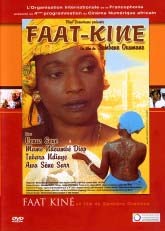 Faat KinéDVDFaat Kiné a été abandonnée par son mari avec ses deux enfants. Seule, elle va les éléver et les mener au prix d’efforts courageux, jusqu’au baccalauréat. Dans ce défi, différents portraits de la société africai…Ousmane Sembène est lié(e) à ce DVD en tant que réalisateur/trice
Faat KinéDVDFaat Kiné a été abandonnée par son mari avec ses deux enfants. Seule, elle va les éléver et les mener au prix d’efforts courageux, jusqu’au baccalauréat. Dans ce défi, différents portraits de la société africai…Ousmane Sembène est lié(e) à ce DVD en tant que réalisateur/trice -
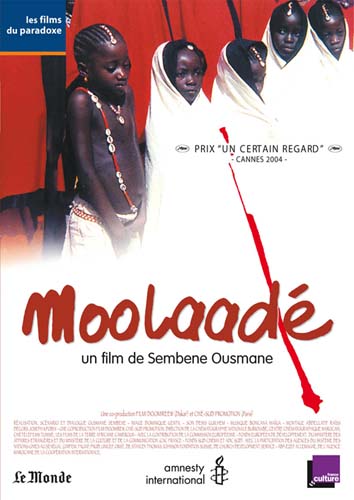 MooladeDVD – 2007Dans un village africain, il y a sept ans, une jeune mère a refusé que sa fille soit excisée, pratique qu’elle juge barbare. Aujourd’hui, quatre fillettes s’enfuient pour échapper à ce « rite de purification », e…Ousmane Sembène est lié(e) à ce DVD en tant que réalisateur/trice
MooladeDVD – 2007Dans un village africain, il y a sept ans, une jeune mère a refusé que sa fille soit excisée, pratique qu’elle juge barbare. Aujourd’hui, quatre fillettes s’enfuient pour échapper à ce « rite de purification », e…Ousmane Sembène est lié(e) à ce DVD en tant que réalisateur/trice -
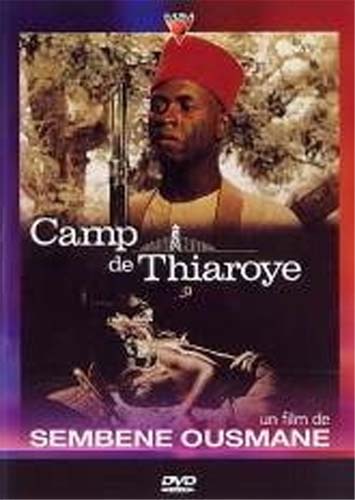 Camp deThiaroyeDVD – 2006Ousmane Sembène est lié(e) à ce DVD en tant que réalisateur/trice
Camp deThiaroyeDVD – 2006Ousmane Sembène est lié(e) à ce DVD en tant que réalisateur/trice -
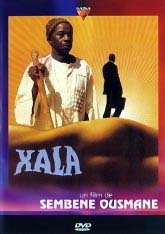 XalaDVD – 2006Ousmane Sembène est lié(e) à ce DVD en tant que réalisateur/trice
XalaDVD – 2006Ousmane Sembène est lié(e) à ce DVD en tant que réalisateur/trice -
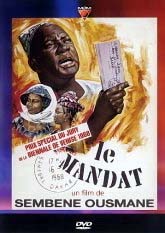 Mandat (le)DVD – 2006Ousmane Sembène est lié(e) à ce DVD en tant que réalisateur/trice
Mandat (le)DVD – 2006Ousmane Sembène est lié(e) à ce DVD en tant que réalisateur/trice -
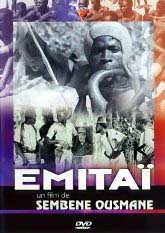 EmitaiDVD – 2006[ VHS ou DVD disponible à la médiathèque des 3 mondes ] En 1942, pendant la seconde guerre mondiale, dans un village de Casamance au Sénégal, les Diolas refusent l’intervention extérieure. Une partie des hom…Ousmane Sembène est lié(e) à ce DVD en tant que réalisateur/trice
EmitaiDVD – 2006[ VHS ou DVD disponible à la médiathèque des 3 mondes ] En 1942, pendant la seconde guerre mondiale, dans un village de Casamance au Sénégal, les Diolas refusent l’intervention extérieure. Une partie des hom…Ousmane Sembène est lié(e) à ce DVD en tant que réalisateur/trice -
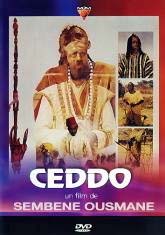 CeddoDVD – 2006Ousmane Sembène est lié(e) à ce DVD en tant que réalisateur/trice
CeddoDVD – 2006Ousmane Sembène est lié(e) à ce DVD en tant que réalisateur/trice -
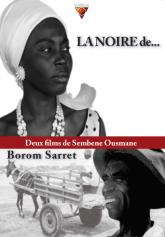 Noire de, suivi de Borom Sarret (La)DVD – 2005Ousmane Sembène est lié(e) à ce DVD en tant que réalisateur/trice
Noire de, suivi de Borom Sarret (La)DVD – 2005Ousmane Sembène est lié(e) à ce DVD en tant que réalisateur/trice
Films(s)
-
 Destin commun, Hommage à 3 éclaireurs du 7ème Art– 2017Ce film est réalisé à partir d’images d’archives et monté à l’occasion des 30 ans de la disparition de Paulin Soumanou Vieyra. Il y a des dates qui nous rappellent à notre Histoire. Il s’agit de l’Histoire du 7e…Ousmane Sembène est lié(e) à ce film en tant que acteur/trice
Destin commun, Hommage à 3 éclaireurs du 7ème Art– 2017Ce film est réalisé à partir d’images d’archives et monté à l’occasion des 30 ans de la disparition de Paulin Soumanou Vieyra. Il y a des dates qui nous rappellent à notre Histoire. Il s’agit de l’Histoire du 7e…Ousmane Sembène est lié(e) à ce film en tant que acteur/trice -
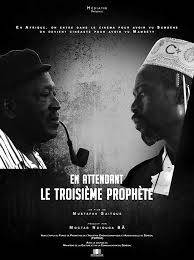 En attendant le troisième prophèteMoyen-métrage – 2016En 60 ans de cinéma en Afrique, SEMBENE et DJIBRIL demeurent les références. L’auteur pose la question : « une troisième voix, existe-t-elle dèjà, peut-elle exister, par qui, comment. Il va à rencontre des deux « prophètes…Ousmane Sembène est lié(e) à ce film en tant que acteur/trice
En attendant le troisième prophèteMoyen-métrage – 2016En 60 ans de cinéma en Afrique, SEMBENE et DJIBRIL demeurent les références. L’auteur pose la question : « une troisième voix, existe-t-elle dèjà, peut-elle exister, par qui, comment. Il va à rencontre des deux « prophètes…Ousmane Sembène est lié(e) à ce film en tant que acteur/trice -
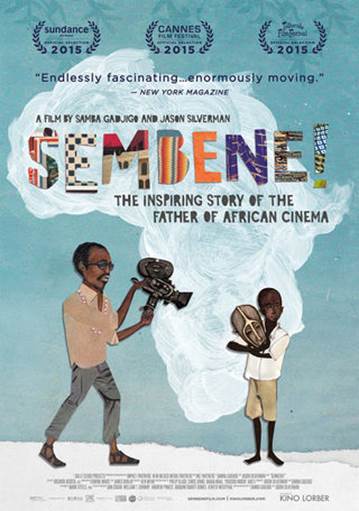 Sembene!Long-métrage – 2015L’histoire du cinéaste et écrivain sénégalais Sembène Ousmane. Utilisant une combinaison de documents d’archives, de nouvelles images, d’animations et d’extraits de films, Gadjigo nous mène à une reconstruction de la …Ousmane Sembène est lié(e) à ce film en tant que acteur/trice
Sembene!Long-métrage – 2015L’histoire du cinéaste et écrivain sénégalais Sembène Ousmane. Utilisant une combinaison de documents d’archives, de nouvelles images, d’animations et d’extraits de films, Gadjigo nous mène à une reconstruction de la …Ousmane Sembène est lié(e) à ce film en tant que acteur/trice -
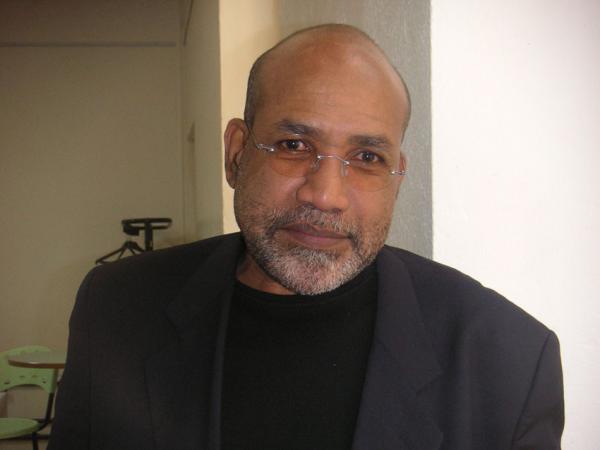 Entre deux rives (projet en cours)Court-métrage – 2014Le projet « Entre deux rives » est une série de 10 documentaires de 26 minutes sur des écrivains d’Afrique et des Caraïbes, francophones et anglophones. Cette série est écrite par Myriam Guilhot, journaliste à Radio France…Ousmane Sembène est lié(e) à ce film en tant que acteur/trice
Entre deux rives (projet en cours)Court-métrage – 2014Le projet « Entre deux rives » est une série de 10 documentaires de 26 minutes sur des écrivains d’Afrique et des Caraïbes, francophones et anglophones. Cette série est écrite par Myriam Guilhot, journaliste à Radio France…Ousmane Sembène est lié(e) à ce film en tant que acteur/trice -
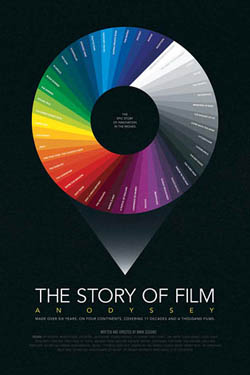 Story Of Film: An Odyssey (The)Long-métrage – 2011Un film de plus de seize heures, où le réalisateur britannique Mark Cousins fait preuve d’une démarche à caractère mondial. Chaque épisode fait 1h05 (65 min). Film en 15 épisodes. « The Story Of Film » Grande-Breta…Ousmane Sembène est lié(e) à ce film en tant que acteur/trice
Story Of Film: An Odyssey (The)Long-métrage – 2011Un film de plus de seize heures, où le réalisateur britannique Mark Cousins fait preuve d’une démarche à caractère mondial. Chaque épisode fait 1h05 (65 min). Film en 15 épisodes. « The Story Of Film » Grande-Breta…Ousmane Sembène est lié(e) à ce film en tant que acteur/trice -
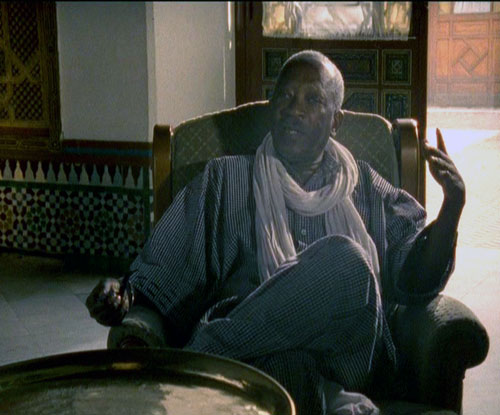 Ousmane Sembene, tout à la foisMoyen-métrage – 2010Entretien filmé en 1992 avec Sembène Ousmane autour de ses films. Réalisatrice : Christine Delorme Sortie France : 2010Ousmane Sembène est lié(e) à ce film en tant que acteur/trice
Ousmane Sembene, tout à la foisMoyen-métrage – 2010Entretien filmé en 1992 avec Sembène Ousmane autour de ses films. Réalisatrice : Christine Delorme Sortie France : 2010Ousmane Sembène est lié(e) à ce film en tant que acteur/trice -
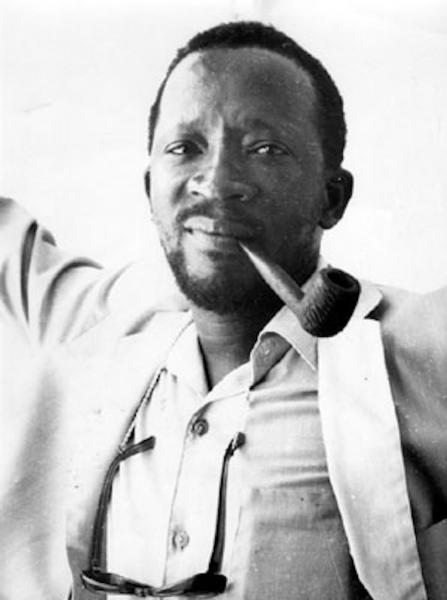 République des rats (La) – [Projet de film]Long-métrage – 2007Un haut magistrat est assassiné en plein centre-ville de Dakar (capitale du Sénégal). a film by / un film de Ousmane SEMBÈNE Sénégal, Feature Film / Long métrage fiction, Drama / Drame Inspiré d’un fait réel (l…Ousmane Sembène est lié(e) à ce film en tant que réalisateur/trice
République des rats (La) – [Projet de film]Long-métrage – 2007Un haut magistrat est assassiné en plein centre-ville de Dakar (capitale du Sénégal). a film by / un film de Ousmane SEMBÈNE Sénégal, Feature Film / Long métrage fiction, Drama / Drame Inspiré d’un fait réel (l…Ousmane Sembène est lié(e) à ce film en tant que réalisateur/trice -
 Comment ça va Ciné AfricaCourt-métrage – 2006Le cinéma africain est en mauvaise posture au moment de. L’arrivée du numérique est elle une aubaine ? Nous tentons de faire l’Etat des lieux et des perspectives du cinéma africain à travers ce film documentaire. So…Ousmane Sembène est lié(e) à ce film en tant que acteur/trice
Comment ça va Ciné AfricaCourt-métrage – 2006Le cinéma africain est en mauvaise posture au moment de. L’arrivée du numérique est elle une aubaine ? Nous tentons de faire l’Etat des lieux et des perspectives du cinéma africain à travers ce film documentaire. So…Ousmane Sembène est lié(e) à ce film en tant que acteur/trice -
 Making of Moolaade (The)Court-métrage – 2004Un film sur le tournage du film Moolaadé de Sembène Ousmane.Ousmane Sembène est lié(e) à ce film en tant que acteur/trice
Making of Moolaade (The)Court-métrage – 2004Un film sur le tournage du film Moolaadé de Sembène Ousmane.Ousmane Sembène est lié(e) à ce film en tant que acteur/trice -
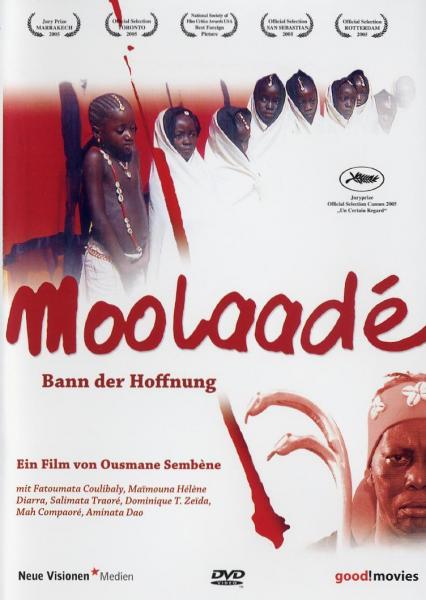 MoolaadéLong-métrage – 2004Dans un village sénégalais, Collé Ardo n’accepte pas que son unique fille soit excisée, ce rite de purification qu’elle juge barbare. La nouvelle se répand dans le pays, et quatre fillettes réclament à Collé Ardo le droi…Ousmane Sembène est lié(e) à ce film en tant que réalisateur/trice
MoolaadéLong-métrage – 2004Dans un village sénégalais, Collé Ardo n’accepte pas que son unique fille soit excisée, ce rite de purification qu’elle juge barbare. La nouvelle se répand dans le pays, et quatre fillettes réclament à Collé Ardo le droi…Ousmane Sembène est lié(e) à ce film en tant que réalisateur/trice -
Sembène [réal. B. Josse & D. Sentilhes]Court-métrage – 2003Portrait du cinéaste sénégalais Sembène Ousmane, sur de nombreuses photos (tournage,…) et extraits de ses films. 2003, France Réalisation B. JOSSE Dominique SENTILHES Musique Alexandre Ouzounoff (made in Ni…Ousmane Sembène est lié(e) à ce film en tant que acteur/trice
-
 Fespakistes (Les)Moyen-métrage – 2001Tourné pendant le Festival panafricain de Ouagadougou [Fespaco], en 1999 et 2001, et sur les tournages de films africains, des cinéastes africains francophones et anglophones parlent sans détour de leur condition de ciné…Ousmane Sembène est lié(e) à ce film en tant que acteur/trice
Fespakistes (Les)Moyen-métrage – 2001Tourné pendant le Festival panafricain de Ouagadougou [Fespaco], en 1999 et 2001, et sur les tournages de films africains, des cinéastes africains francophones et anglophones parlent sans détour de leur condition de ciné…Ousmane Sembène est lié(e) à ce film en tant que acteur/trice -
Faat-KinéLong-métrage – 1999Faat-Kiné, une femme de quarante ans refuse de céder aux stigmates de la maternité non mariée et gravit les échelons du succès dans un domaine dominé par les hommes. Faat-Kiné a été abandonnée avec ses deux enfants pa…Ousmane Sembène est lié(e) à ce film en tant que réalisateur/trice
-
 Héroïsme au quotidien (L’)Court-métrage – 1999a film by / un film de Ousmane SEMBÈNE Sénégal, 1999, Short Film / Court métrage fiction, Drama / Drame, Vidéo. Commissionned Short drama / Film de commande Director / Réalisateur : SEMBÈNE OusmaneOusmane Sembène est lié(e) à ce film en tant que réalisateur/trice
Héroïsme au quotidien (L’)Court-métrage – 1999a film by / un film de Ousmane SEMBÈNE Sénégal, 1999, Short Film / Court métrage fiction, Drama / Drame, Vidéo. Commissionned Short drama / Film de commande Director / Réalisateur : SEMBÈNE OusmaneOusmane Sembène est lié(e) à ce film en tant que réalisateur/trice -
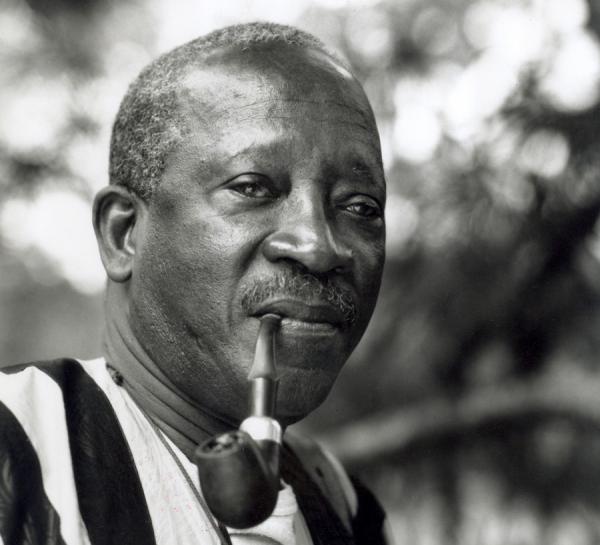 Ousmane SEMBENE Cinéaste-EcrivainCourt-métrage – 1996Sembene parle de ses rapports avec la littérature et le cinéma, ses films, sa formation, de l’Afrique et de son Pays le Sénégal, sur un ton égal à lui même…de Militant. C’est un montage de divers séquences filmées lor…Ousmane Sembène est lié(e) à ce film en tant que acteur/trice
Ousmane SEMBENE Cinéaste-EcrivainCourt-métrage – 1996Sembene parle de ses rapports avec la littérature et le cinéma, ses films, sa formation, de l’Afrique et de son Pays le Sénégal, sur un ton égal à lui même…de Militant. C’est un montage de divers séquences filmées lor…Ousmane Sembène est lié(e) à ce film en tant que acteur/trice -
 Sembene Ousmane : The making of African CinemaLong-métrage – 1993Ce riche documentaire suit le légendaire cinéaste sénégalais Sembène Ousmane depuis le Festival Panafricain du cinéma de Ouagadougou au Burkina Faso jusqu’aux rues de Dakar et sa maison Galle Ceddo à Yoff, surplombant la…Ousmane Sembène est lié(e) à ce film en tant que acteur/trice
Sembene Ousmane : The making of African CinemaLong-métrage – 1993Ce riche documentaire suit le légendaire cinéaste sénégalais Sembène Ousmane depuis le Festival Panafricain du cinéma de Ouagadougou au Burkina Faso jusqu’aux rues de Dakar et sa maison Galle Ceddo à Yoff, surplombant la…Ousmane Sembène est lié(e) à ce film en tant que acteur/trice -
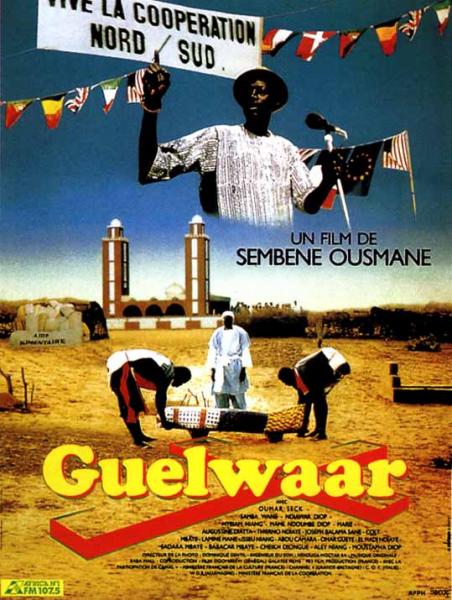 GuelwaarLong-métrage – 1992Le matin des obsèques de Guelwaar, grande figure de la résistance et défenseur d'une Afrique non corrompue, on s'aperçoit que son corps a disparu de la morgue. Après des recherc…Ousmane Sembène est lié(e) à ce film en tant que réalisateur/trice
GuelwaarLong-métrage – 1992Le matin des obsèques de Guelwaar, grande figure de la résistance et défenseur d'une Afrique non corrompue, on s'aperçoit que son corps a disparu de la morgue. Après des recherc…Ousmane Sembène est lié(e) à ce film en tant que réalisateur/trice -
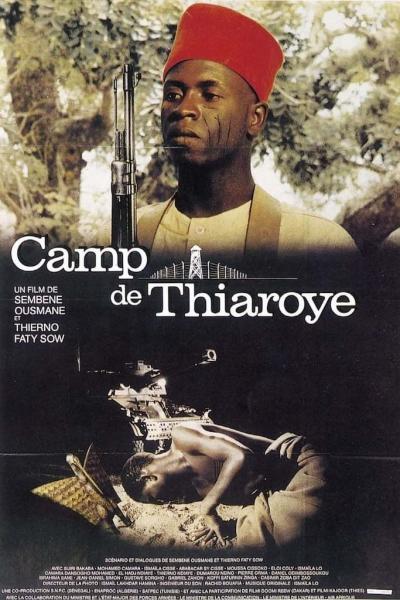 Camp de ThiaroyeLong-métrage – 1988Un épisode sanglant peu glorieux de l’histoire. Au Sénégal en 1944, un bataillon de tirailleurs arrive au camp de transit de Thiaroye, dans la banlieue de Dakar. Ils y attendent leur démobilisation et leur pécule. Après …Ousmane Sembène est lié(e) à ce film en tant que réalisateur/trice
Camp de ThiaroyeLong-métrage – 1988Un épisode sanglant peu glorieux de l’histoire. Au Sénégal en 1944, un bataillon de tirailleurs arrive au camp de transit de Thiaroye, dans la banlieue de Dakar. Ils y attendent leur démobilisation et leur pécule. Après …Ousmane Sembène est lié(e) à ce film en tant que réalisateur/trice -
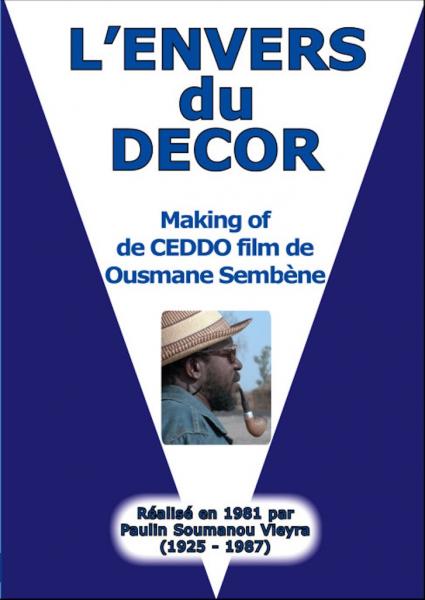 Envers du décor (L’)Court-métrage – 1981Paulin Vieyra filme Ousmane Sembène, l'un des plus grands cinéastes africains, lors du tournage de Ceddo. L'ENVERS DU DÉCOR a mis quatre ans à se réaliser. Quant au film CEDDO, …Ousmane Sembène est lié(e) à ce film en tant que acteur/trice
Envers du décor (L’)Court-métrage – 1981Paulin Vieyra filme Ousmane Sembène, l'un des plus grands cinéastes africains, lors du tournage de Ceddo. L'ENVERS DU DÉCOR a mis quatre ans à se réaliser. Quant au film CEDDO, …Ousmane Sembène est lié(e) à ce film en tant que acteur/trice -
 Almamy Samory Touré (L’) [Projet de film]Long-métrage – 1980Biopic (film portrait) de l'empereur Samory Touré, résistant au colonialisme français. Biopic "Le" grand projet de film de Sembène qui n'aura jamais les moyens et le temps d…Ousmane Sembène est lié(e) à ce film en tant que réalisateur/trice
Almamy Samory Touré (L’) [Projet de film]Long-métrage – 1980Biopic (film portrait) de l'empereur Samory Touré, résistant au colonialisme français. Biopic "Le" grand projet de film de Sembène qui n'aura jamais les moyens et le temps d…Ousmane Sembène est lié(e) à ce film en tant que réalisateur/trice -
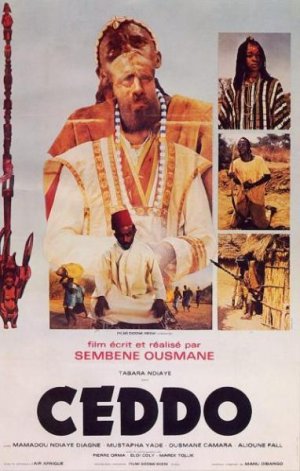 CeddoLong-métrage – 1976A la fin du XVIIe siècle, des missionnaires chrétiens et musulmans tentent de convertir les Ceddos, peuple aux convictions animistes. À la fin du XVIIe siècle, l'islam et le christianisme …Ousmane Sembène est lié(e) à ce film en tant que réalisateur/trice
CeddoLong-métrage – 1976A la fin du XVIIe siècle, des missionnaires chrétiens et musulmans tentent de convertir les Ceddos, peuple aux convictions animistes. À la fin du XVIIe siècle, l'islam et le christianisme …Ousmane Sembène est lié(e) à ce film en tant que réalisateur/trice -
 XalaLong-métrage – 1974El Hadji Abdou Kader Beye, homme d'affaires sénégalais quinquagénaire, prend une troisième épouse, signe de réussite sociale et économique surtout. Le soir du mariage,…Ousmane Sembène est lié(e) à ce film en tant que réalisateur/trice
XalaLong-métrage – 1974El Hadji Abdou Kader Beye, homme d'affaires sénégalais quinquagénaire, prend une troisième épouse, signe de réussite sociale et économique surtout. Le soir du mariage,…Ousmane Sembène est lié(e) à ce film en tant que réalisateur/trice -
 Basket africain– 1972Le basket africain aux Jeux Olympiques de Munich 72. BASKET AFRICAIN aux J.O. de Munich – réalisé par / directed by SEMBÈNE Ousmane – Sénégal – 1972 – court métrage / short –Ousmane Sembène est lié(e) à ce film en tant que réalisateur/trice
Basket africain– 1972Le basket africain aux Jeux Olympiques de Munich 72. BASKET AFRICAIN aux J.O. de Munich – réalisé par / directed by SEMBÈNE Ousmane – Sénégal – 1972 – court métrage / short –Ousmane Sembène est lié(e) à ce film en tant que réalisateur/trice -
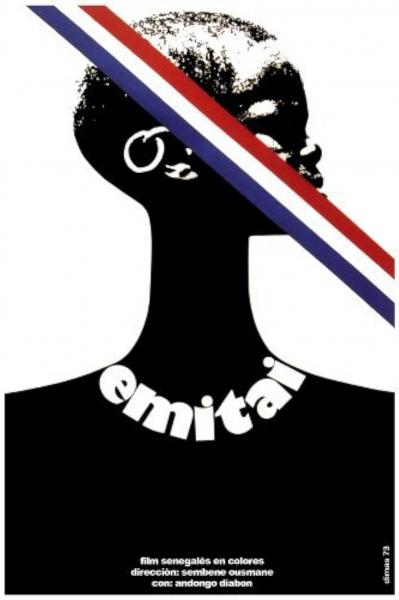 Emitai – Dieu du tonnerreLong-métrage – 1971En 1942, pendant la seconde guerre mondiale, dans un village de Casamance au Sénégal, les Diolas refusent l’intervention extérieure. Une partie des hommes du village a été envoyée, de force, sur le front franco-allemand….Ousmane Sembène est lié(e) à ce film en tant que réalisateur/trice
Emitai – Dieu du tonnerreLong-métrage – 1971En 1942, pendant la seconde guerre mondiale, dans un village de Casamance au Sénégal, les Diolas refusent l’intervention extérieure. Une partie des hommes du village a été envoyée, de force, sur le front franco-allemand….Ousmane Sembène est lié(e) à ce film en tant que réalisateur/trice -
 Jeux Olympiques de MunichMoyen-métrage – 1971Le regard de Sembène sur les Jeux Olympiques de Munich 72. Film en deux parties Réalisation/Director : SEMBÈNE OusmaneOusmane Sembène est lié(e) à ce film en tant que réalisateur/trice
Jeux Olympiques de MunichMoyen-métrage – 1971Le regard de Sembène sur les Jeux Olympiques de Munich 72. Film en deux parties Réalisation/Director : SEMBÈNE OusmaneOusmane Sembène est lié(e) à ce film en tant que réalisateur/trice
Livres(s)
-
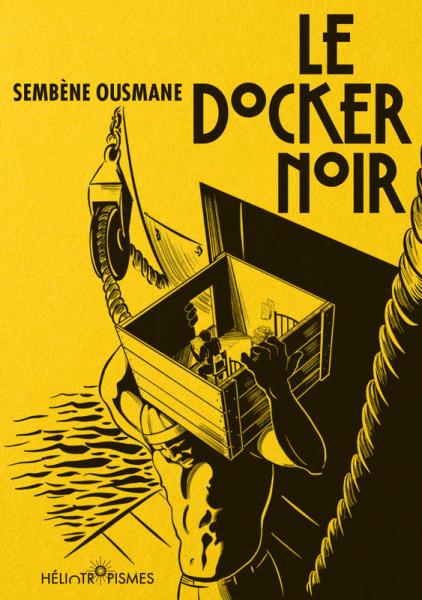 Docker noir (Le) – édition augmentéeRomanMarseille, années 1950. Diaw Falla, docker sénégalais, vit à Belsunce, le « petit Harlem marseillais », et travaille sur le port en compagnie de nombreux ouvriers africains. Menant une existence précaire, il rêve…Ousmane Sembène est lié(e) à ce livre en tant que ecrivain/ne
Docker noir (Le) – édition augmentéeRomanMarseille, années 1950. Diaw Falla, docker sénégalais, vit à Belsunce, le « petit Harlem marseillais », et travaille sur le port en compagnie de nombreux ouvriers africains. Menant une existence précaire, il rêve…Ousmane Sembène est lié(e) à ce livre en tant que ecrivain/ne -
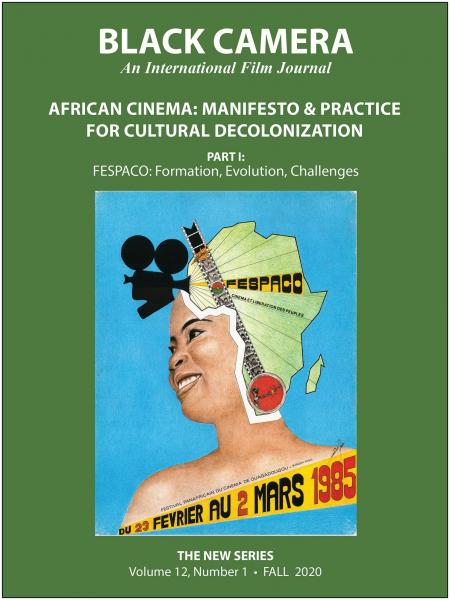 Black Camera: Fespaco / formation, evolution, challengesRevueBlack Camera Vol. 12, No. 1, Fall 2020 Table of Contents Preface (pp. 3-4) Ardiouma Soma Introduction (pp. 5-9) Gaston J.M. Kaboré and Michael T. Martin – I. SITES AND CONTEXTS OF EXHIBITION African Fi…Ousmane Sembène est lié(e) à ce livre en tant que ecrivain/ne
Black Camera: Fespaco / formation, evolution, challengesRevueBlack Camera Vol. 12, No. 1, Fall 2020 Table of Contents Preface (pp. 3-4) Ardiouma Soma Introduction (pp. 5-9) Gaston J.M. Kaboré and Michael T. Martin – I. SITES AND CONTEXTS OF EXHIBITION African Fi…Ousmane Sembène est lié(e) à ce livre en tant que ecrivain/ne -
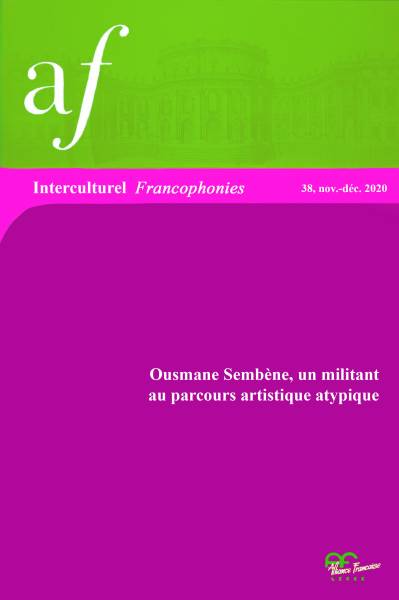 Ousmane Sembène, un militant au parcours artistique atypiqueétudes littéraires, critiquesOusmane Sembène, un militant au parcours artistique atypique est le titre du n° 38, nov.-déc. 2020, d'Interculturel Francophonies, revue semestrielle sur les cultures et littérature…Ousmane Sembène est lié(e) à ce livre en tant que ecrivain/ne
Ousmane Sembène, un militant au parcours artistique atypiqueétudes littéraires, critiquesOusmane Sembène, un militant au parcours artistique atypique est le titre du n° 38, nov.-déc. 2020, d'Interculturel Francophonies, revue semestrielle sur les cultures et littérature…Ousmane Sembène est lié(e) à ce livre en tant que ecrivain/ne -
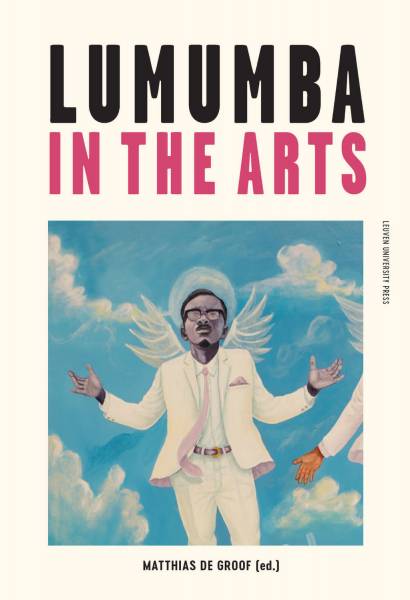 Lumumba dans les ArtsOuvrage collectifCe n'est pas un hasard si une figure historique comme Patrice Emery Lumumba, premier Premier ministre du Congo indépendant, tué en 1961, a vécu dans le domaine de l'imaginaire cultu…Ousmane Sembène est lié(e) à ce livre en tant que ecrivain/ne
Lumumba dans les ArtsOuvrage collectifCe n'est pas un hasard si une figure historique comme Patrice Emery Lumumba, premier Premier ministre du Congo indépendant, tué en 1961, a vécu dans le domaine de l'imaginaire cultu…Ousmane Sembène est lié(e) à ce livre en tant que ecrivain/ne -
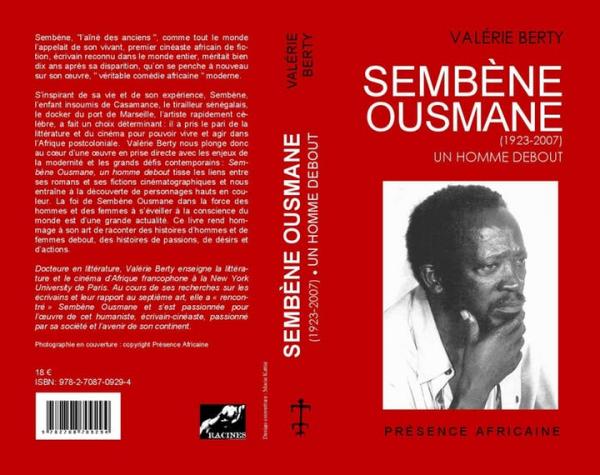 Sembène Ousmane (1923-2007): Un homme deboutEssaiSembène Ousmane, écrivain sénégalais et premier cinéaste africain de fiction, né sous l’ère coloniale et décédé 47 ans après les Indépendances africaines, laisse une œuvre volumineuse. Ses dix romans et ses dix…Ousmane Sembène est lié(e) à ce livre en tant que personne concernée
Sembène Ousmane (1923-2007): Un homme deboutEssaiSembène Ousmane, écrivain sénégalais et premier cinéaste africain de fiction, né sous l’ère coloniale et décédé 47 ans après les Indépendances africaines, laisse une œuvre volumineuse. Ses dix romans et ses dix…Ousmane Sembène est lié(e) à ce livre en tant que personne concernée -
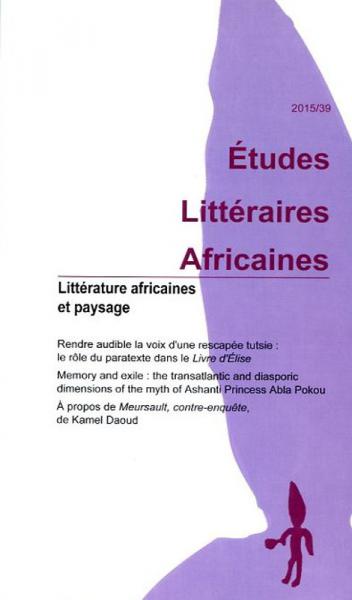 Littérature africaine et paysageRevue« L’intérêt mais aussi la difficulté d’une interrogation à propos du paysage dans le corpus des littératures africaines apparaissaient déjà dans African horizons de Christine Loflin. Le mot « horizons » dit à lui…Ousmane Sembène est lié(e) à ce livre en tant que personne concernée
Littérature africaine et paysageRevue« L’intérêt mais aussi la difficulté d’une interrogation à propos du paysage dans le corpus des littératures africaines apparaissaient déjà dans African horizons de Christine Loflin. Le mot « horizons » dit à lui…Ousmane Sembène est lié(e) à ce livre en tant que personne concernée -
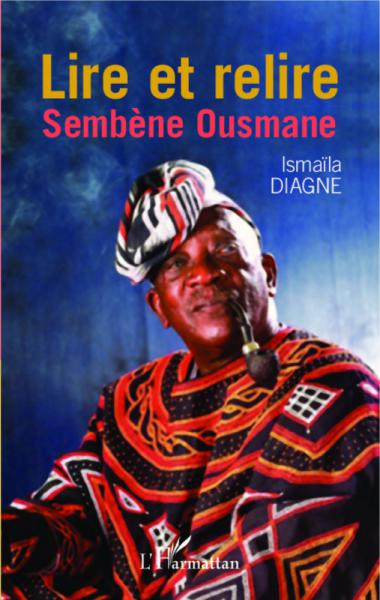 Lire et relire Sembène Ousmaneétudes littéraires, critiques» L’auteur décrit ici l’univers romanesque et cinématographique de Sembène Ousmane, sous toutes ses coutures. A travers les multiples extraits de Ceddo, de Guelwar ou encore des Bouts de bois de Dieu, il dissèq…Ousmane Sembène est lié(e) à ce livre en tant que ecrivain/ne
Lire et relire Sembène Ousmaneétudes littéraires, critiques» L’auteur décrit ici l’univers romanesque et cinématographique de Sembène Ousmane, sous toutes ses coutures. A travers les multiples extraits de Ceddo, de Guelwar ou encore des Bouts de bois de Dieu, il dissèq…Ousmane Sembène est lié(e) à ce livre en tant que ecrivain/ne -
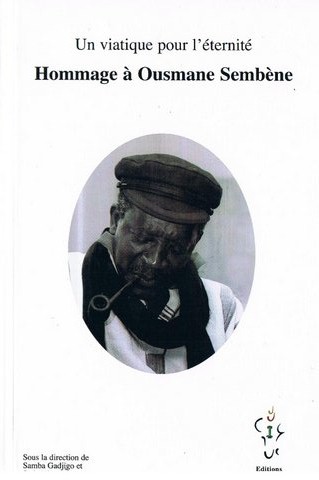 Hommage à Ousmane SembèneRécit, témoignageUne vingtaine d’intellectuels d’Afrique, d’Europe et d’Amérique rendent hommage à Ousme Sembène. Ce “célèbre inconnu”… « Sembène est eseul qui,sans être passé par Ponty,Maisons-Alfort ou la Sorbonne, a pu se pr…Ousmane Sembène est lié(e) à ce livre en tant que ecrivain/ne
Hommage à Ousmane SembèneRécit, témoignageUne vingtaine d’intellectuels d’Afrique, d’Europe et d’Amérique rendent hommage à Ousme Sembène. Ce “célèbre inconnu”… « Sembène est eseul qui,sans être passé par Ponty,Maisons-Alfort ou la Sorbonne, a pu se pr…Ousmane Sembène est lié(e) à ce livre en tant que ecrivain/ne -
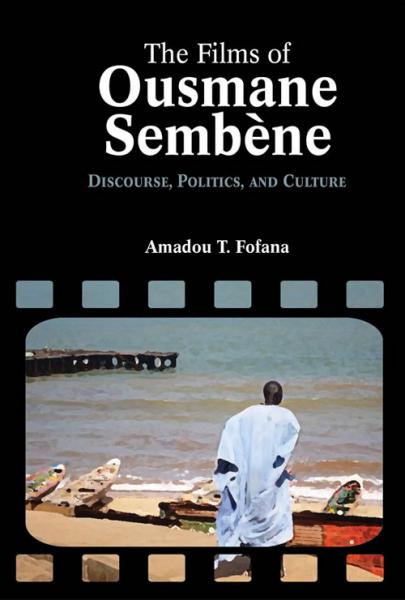 Films of Ousmane Sembène: Discourse, Culture, and Politics (The)EssaiUn livre sur les films de Sembène Ousmane, par Amadou Fofana. *This book is in the Cambria Contemporary Global Performing Arts Series (General editor: John Clum, Duke University). Ousmane Sembène was a Se…Ousmane Sembène est lié(e) à ce livre en tant que réalisateur/trice
Films of Ousmane Sembène: Discourse, Culture, and Politics (The)EssaiUn livre sur les films de Sembène Ousmane, par Amadou Fofana. *This book is in the Cambria Contemporary Global Performing Arts Series (General editor: John Clum, Duke University). Ousmane Sembène was a Se…Ousmane Sembène est lié(e) à ce livre en tant que réalisateur/trice -
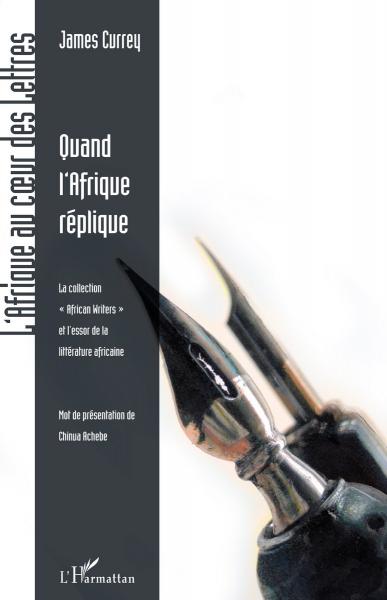 Quand l’Afrique répliqueDocumentL’African Writers Series (la collection « African Writers ») de la maison d’édition britannique Heinemann a joué en anglais un rôle équivalent à celui de Présence Africaine en français. De 1962 à la fin du 20e si…Ousmane Sembène est lié(e) à ce livre en tant que personne concernée
Quand l’Afrique répliqueDocumentL’African Writers Series (la collection « African Writers ») de la maison d’édition britannique Heinemann a joué en anglais un rôle équivalent à celui de Présence Africaine en français. De 1962 à la fin du 20e si…Ousmane Sembène est lié(e) à ce livre en tant que personne concernée -
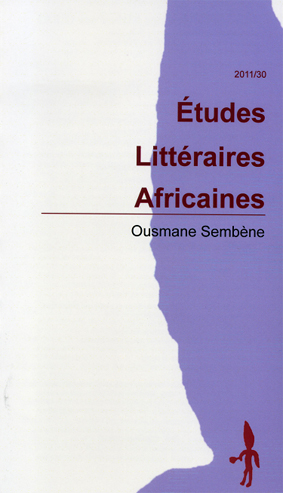 Ousmane SembèneRevueTextes réunis par Phyllis TAOUA Les études rassemblées ici s’attachent à diverses oeuvres majeures de l’écrivain, principalement Les Bouts de bois de Dieu (1960), Le Mandat (1966), Xala (1973) et Guelwaar (1…Ousmane Sembène est lié(e) à ce livre en tant que personne concernée
Ousmane SembèneRevueTextes réunis par Phyllis TAOUA Les études rassemblées ici s’attachent à diverses oeuvres majeures de l’écrivain, principalement Les Bouts de bois de Dieu (1960), Le Mandat (1966), Xala (1973) et Guelwaar (1…Ousmane Sembène est lié(e) à ce livre en tant que personne concernée -
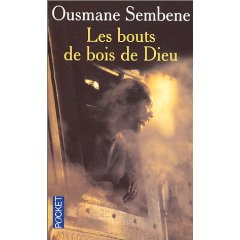 Bouts de bois de Dieu (Les)RomanCe roman, qui se déroule du Sénégal au Soudan (le Mali d’aujourd’hui), s’inspire de faits réels: la grève des cheminots du « Dakar-Niger », ces ouvriers noirs qui, entre eux, s’appellent les « Bouts de bois de Die…Ousmane Sembène est lié(e) à ce livre en tant que ecrivain/ne
Bouts de bois de Dieu (Les)RomanCe roman, qui se déroule du Sénégal au Soudan (le Mali d’aujourd’hui), s’inspire de faits réels: la grève des cheminots du « Dakar-Niger », ces ouvriers noirs qui, entre eux, s’appellent les « Bouts de bois de Die…Ousmane Sembène est lié(e) à ce livre en tant que ecrivain/ne -
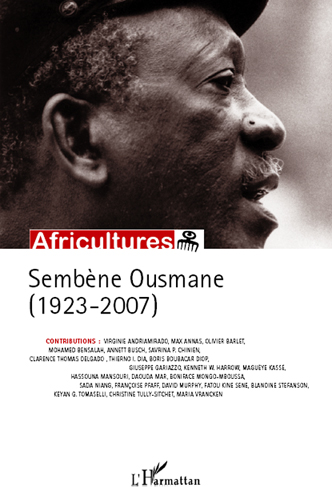 Sembène Ousmane (1923-2007)Revue« Comment construire ensemble un monde meilleur pour tous ? » C’est la question fondamentale qui traverse l’œuvre de Sembène Ousmane, cinéaste-écrivain sénégalais. Il répond par le principe Ubuntu (« je suis parce…Ousmane Sembène est lié(e) à ce livre en tant que personne concernée
Sembène Ousmane (1923-2007)Revue« Comment construire ensemble un monde meilleur pour tous ? » C’est la question fondamentale qui traverse l’œuvre de Sembène Ousmane, cinéaste-écrivain sénégalais. Il répond par le principe Ubuntu (« je suis parce…Ousmane Sembène est lié(e) à ce livre en tant que personne concernée -
 Voltaïque/La noire de…NouvellesFormat : 11 x 17,5 cmOusmane Sembène est lié(e) à ce livre en tant que ecrivain/ne
Voltaïque/La noire de…NouvellesFormat : 11 x 17,5 cmOusmane Sembène est lié(e) à ce livre en tant que ecrivain/ne -
 NiiwamRomanFormat : 11 x 17,5 cmOusmane Sembène est lié(e) à ce livre en tant que ecrivain/ne
NiiwamRomanFormat : 11 x 17,5 cmOusmane Sembène est lié(e) à ce livre en tant que ecrivain/ne -
 L’harmattanRomanFormat : 11 x 17,5 cmOusmane Sembène est lié(e) à ce livre en tant que ecrivain/ne
L’harmattanRomanFormat : 11 x 17,5 cmOusmane Sembène est lié(e) à ce livre en tant que ecrivain/ne -
 Le mandat/Véhi CiosaneRomanFormat : 11 x 17,5 cmOusmane Sembène est lié(e) à ce livre en tant que ecrivain/ne
Le mandat/Véhi CiosaneRomanFormat : 11 x 17,5 cmOusmane Sembène est lié(e) à ce livre en tant que ecrivain/ne -
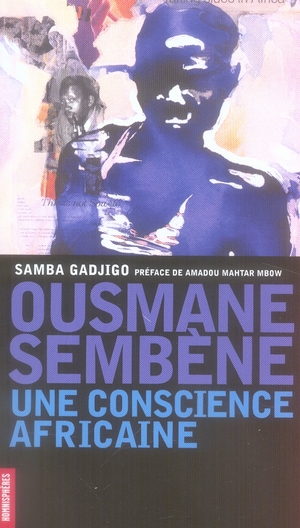 Ousmane Sembene : une conscience africaineBiographieDe Ousmane Sembène, écrivain mondialement reconnu et « père du cinéma africain », on ne sait que peu de chose. Né en Casamance en 1923, mort à Dakar en 2007, fils de pêcheur, il a été maçon, tirailleur dans l’arm…Ousmane Sembène est lié(e) à ce livre en tant que réalisateur/trice
Ousmane Sembene : une conscience africaineBiographieDe Ousmane Sembène, écrivain mondialement reconnu et « père du cinéma africain », on ne sait que peu de chose. Né en Casamance en 1923, mort à Dakar en 2007, fils de pêcheur, il a été maçon, tirailleur dans l’arm…Ousmane Sembène est lié(e) à ce livre en tant que réalisateur/trice -
 Docker noir (Le)RomanA nouveau disponible ! 6,10 €Ousmane Sembène est lié(e) à ce livre en tant que ecrivain/ne
Docker noir (Le)RomanA nouveau disponible ! 6,10 €Ousmane Sembène est lié(e) à ce livre en tant que ecrivain/ne -
 GuelwaarRoman« Guelwaar décrit le bouleversement qu’entraîne, dans un village, l’inhumation d’un chrétien dans un cimetière musulman. Guelwaar traite de la honte, de la mendicité et de l’asservissement, dénonce dans une fabl…Ousmane Sembène est lié(e) à ce livre en tant que ecrivain/ne
GuelwaarRoman« Guelwaar décrit le bouleversement qu’entraîne, dans un village, l’inhumation d’un chrétien dans un cimetière musulman. Guelwaar traite de la honte, de la mendicité et de l’asservissement, dénonce dans une fabl…Ousmane Sembène est lié(e) à ce livre en tant que ecrivain/ne
Partager :




